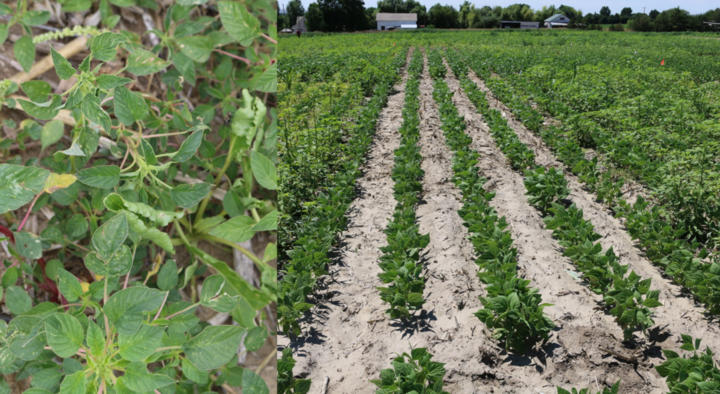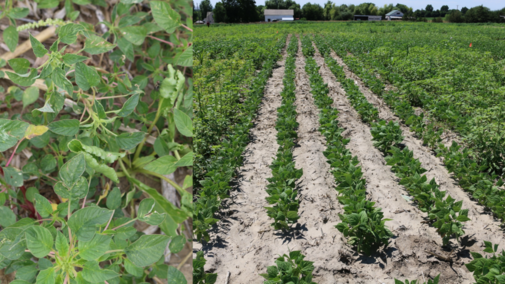In the Panhandle of Nebraska, three weed species have been confirmed resistant to glyphosate (Roundup): kochia, Palmer amaranth, and waterhemp. In 2017 50% of all kochia samples and 13% of all Palmer amaranth samples screened were confirmed to be resistant (Figure 1). No waterhemp samples received in 2017 were found to be resistant to glyphosate. In the Panhandle glyphosate-resistant kochia is fairly evenly distributed throughout the region. Herbicide-resistant Palmer amaranth and waterhemp, however, tend to be concentrated between Lake Minatare and Bridgeport.

In addition to glyphosate resistance, all three species have also been confirmed resistant to ALS (raptor) and Photosystem II (atrazine) inhibiting herbicides in western Nebraska, and dicamba-resistant kochia has been confirmed in southwest Nebraska. Further east, certain populations of these species have also become resistant to growth regulators (2,4-D) and HPPD inhibitors (Callisto, Laudis). The impact of these three weed species to a particular farming operation depends on the crops grown, with good options for control available in wheat and corn, and considerably fewer options available in sugarbeet or dry bean.
For control of pigweeds (Palmer amaranth and waterhemp) in dry bean weed scientists in North Dakota have been recommending using Raptor, Basagran, and Reflex at sub-labeled rates and at split application for control. In sugarbeet, herbicide-resistant pigweeds were easily controlled in Michigan using Betamix at 2 pints per acre. Unfortunately, both programs didn’t provide sufficient control. So what works in western Nebraska for control of herbicide-resistant weeds?
- Preplant-incorporated herbicides (PPIs) provided the best chance for season long weed control in dry bean.
- PRE programs (Prowl H20 with Outlook or Dual) provided good control in light infestations.
- Reflex is the only effective option for post-crop emergent control in dry bean, but it may lead to injury in next year’s corn crop.
- Betamix failed to control Palmer amaranth at 6 pints per acre in field trials. Work is ongoing to determine if pigweed is resistant to Betamix.
- Layby application of Outlook, Sequence, or Dual can prevent further emergence of pigweeds in sugarbeet.
- To control Palmer amaranth, waterhemp, or kochia in corn glyphosate (RoundUp or Touchdown) cannot be applied alone.
- Dicamba (Clarity, DiFlexx) applied at sufficient rates provided good control of kochia, waterhemp, and Palmer amaranth in corn. However, if you’re concerned about dicamba-resistant kochia, fluoxypyr (Starane) is the best option.

Closing
Due to the relatively late planting date of dry bean, kochia isn’t as problematic as in other irrigated crops in the Panhandle. Herbicide-resistant pigweeds however, emerge throughout the year in dry bean and can heavily impact yield and harvest operations. Control of herbicide-resistant waterhemp and Palmer amaranth is possible through the use of the right PRE or PPI herbicides.
In comparison, herbicide options for kochia, waterhemp, and Palmer amaranth are lacking in sugarbeet. The best option for control of herbicide-resistant weeds in sugarbeet is with rotational strategies, relying on multiple years of corn or irrigated wheat prior to the sugarbeet crop to reduce the seed bank of herbicide-resistant weeds. Corn and small grains remain the best crops available for controlling herbicide-resistant weeds as there are better herbicide options, and corn and wheat are better competitors.

